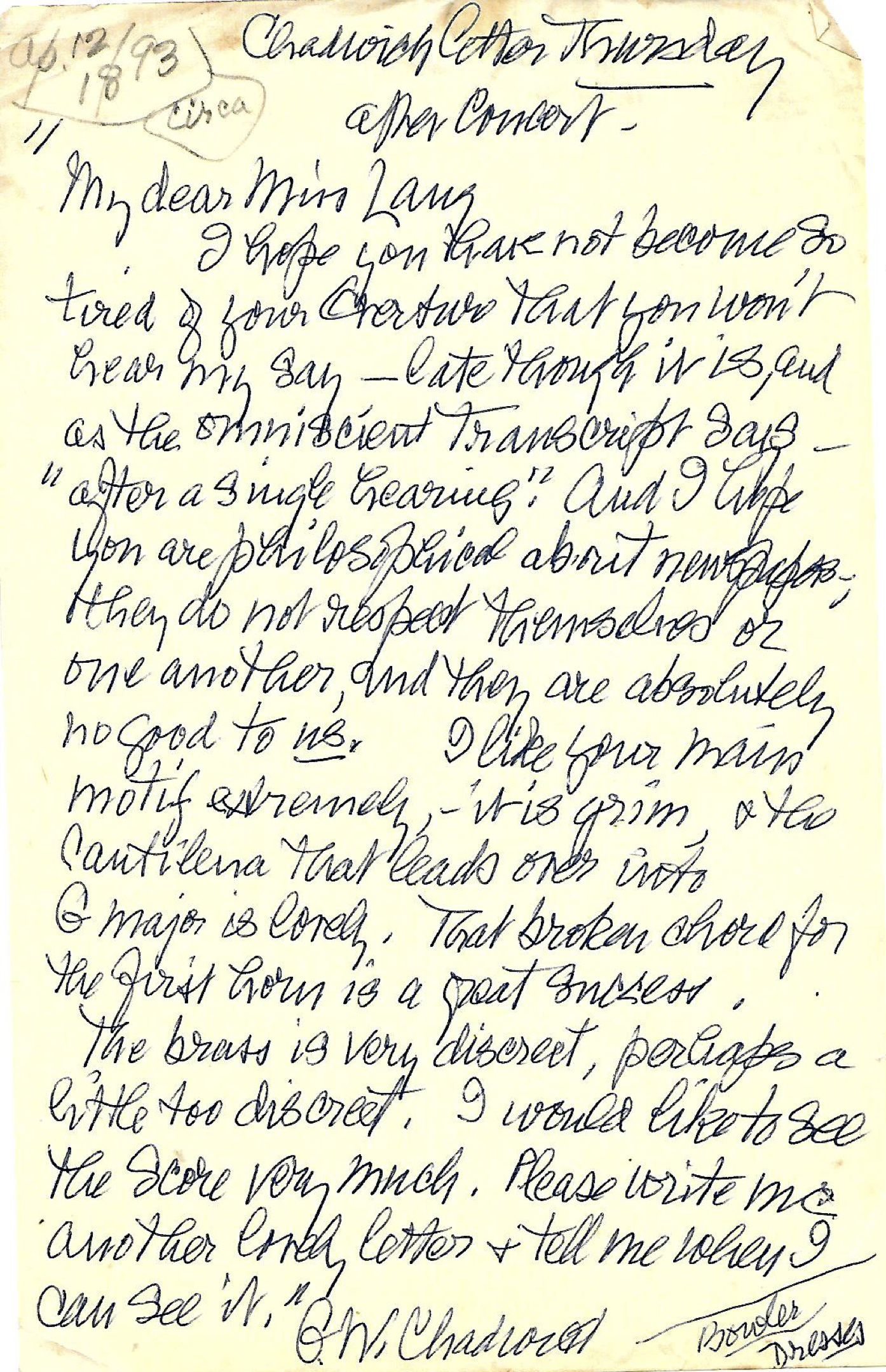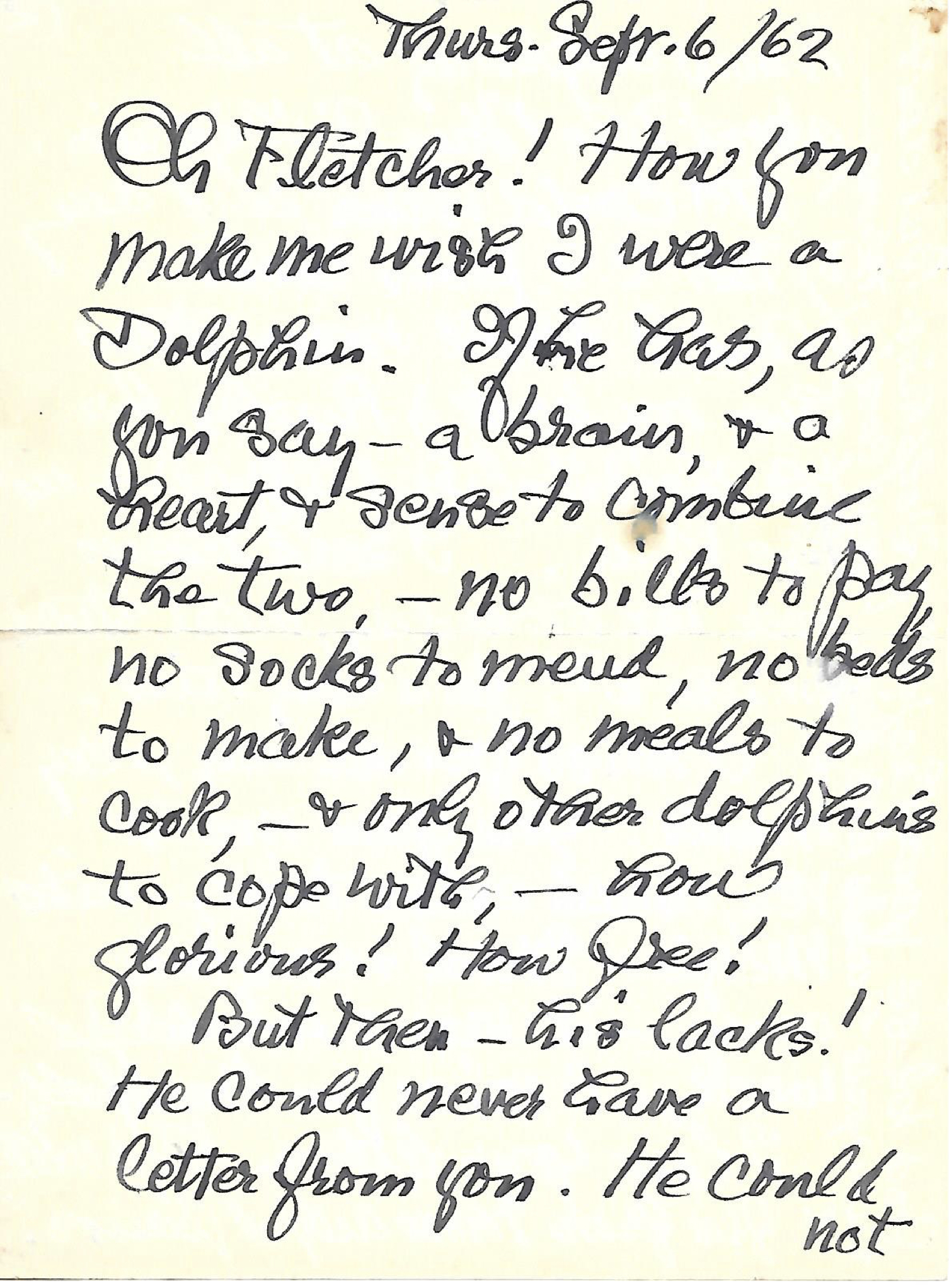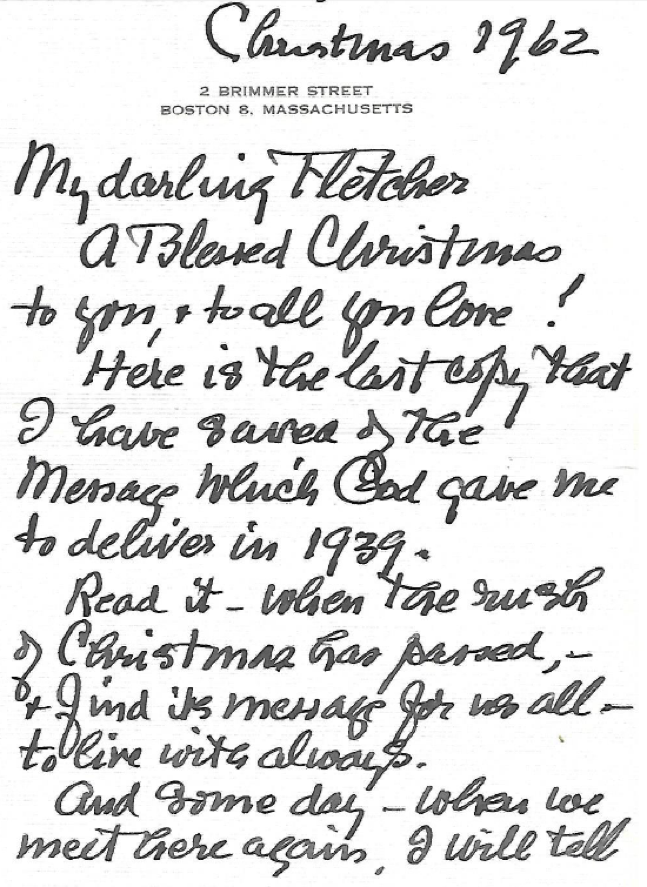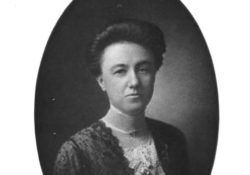An Online Exhibition compiled by her grandnephew, Fletcher DuBois
Margaret Ruthven Lang (1867-1972) was an American composer of songs, solo piano, chamber, choral and symphonic pieces. In 1889, Lang’s song “Ojalá” was performed in Paris during the famous Paris World’s Fair Exposition. A member of the Second New England School, she has the distinction of being the first woman composer to have a composition performed by a major American symphony orchestra. Lang enjoyed an important position as a female composer through the turn of the century. Though she destroyed most of her works, her songs, an American treasure, survive in libraries and collections throughout the country.
Irish Love Song
Margaret Ruthven Lang's "Irish Love Song"
from the album Love is Everywhere
DuoDrama:
Donald George, tenor
Lucy Mauro, piano
On Margaret Ruthven Lang's 150th Birthday: An Online Exhibition
by Fletcher DuBois (Margaret Ruthven Lang’s grandnephew)
Here you will find items that I have saved over many years and which in different ways bear testimony to what a remarkable life Margaret Ruthven Lang led not only as a famous and history-making musician but as someone who composed in other ways as well throughout that long life.
Born 150 years ago in Boston (November 27, 1867), she became the first woman in the United States to have an orchestral work performed by a major symphony [Dramatic Overture op.12 on April 7th, 1893 in Boston, and shortly thereafter Witichis op.10 at the World’s Columbian Exposition, Chicago].
She was my beloved great aunt who showed me much caring and enlightening support when I was in my teens and early twenties, and she in her nineties and right up until her death at the age of 104 and a half.
Many have asked why she ceased composing in her early fifties. Her brief reported answer “I had nothing more to say” has left many still wondering. This exhibition will (I hope) be proof of her continued creative endeavor for others in various media.
The theological tracts she wrote between 1929 and 1939 and distributed free of charge to churches that requested them were widely used in the United States as well also finding their way to Great Britain, Canada and Egypt.
The ANAGRAMS IN RHYME: To shorten long hours booklet was written and published by her to send to wounded officers in World War II. This as well as the theological tracts made no mention of Margaret Ruthven Lang being the author. And her full name did not appear.
Her extensive correspondence with up to sixty or seventy relatives and friends, and in three languages, was yet another way she connected with others, offering solace, insight and spiritual strength.
The letters and photographs here have been chosen because they connect with these different ways Margaret Ruthven Lang continued throughout her life to compose letters, poems and tracts. The lyrical or passionate or sometimes quite humorous way she could turn a phrase remind me of course of her ability to do that musically as well.
Since she at times in her letters referred to how ones handwriting had become more mature, I think it not out of place to share my amazement at her own script in such advanced years: strong rhythmic and flowing.
The idea that she retired into some kind of nostalgic past is very far from the truth. Those of her grandnieces and nephews who would visit with her were continually presented with her desire to know what they were doing and what was happening now. And she had an intense desire to see how things would unfold. At the age of 100 or more, I remember seeing on her little table several books she was reading. One was Eldridge Cleavers’s Soul on Ice and the other was a work by the great philosopher Alfred North Whitehead. One was brand new, and the other not new, but still very relevant to understanding the emergence of the not foreseen.
Portraits
Image 1: A formal portrait done by Bachrach Studios. This has been in our home at least since the early seventies, and it still has a very old frame. I am assuming this was never used for publicity.
Image 2: This is MRL as a young teenager (probably 1882 or 1883), namely after the Homers gave her the Irish Setter as a present. “Maidie” loved dogs and continued to do so throughout her life. The Homers were the elder brother and sister-in-law of the famous painter Winslow Homer, who drew a portrait of MRL’s father B.J. Lang at the organ. Maidie’s first trip alone was at the age of 13 to visit the Homers in West Townsend, Massachusetts.
Image 3: This painted portrait of MRL’s beloved dog Bowler was done by her very dear and close friend Catherine Codman, a well known artist. Bowler was still alive when this was painted in 1895, and there are several brief entries about him in the excerpts done by Rosamond Lang Galacar (MRL’s younger sister) from their mother Frances Morse Burrage Lang’s diaries. These excerpts include much fascinating family history including a few anecdotes about Bowler. Bowler’s eyes follow you when you walk past the picture.
Image 4: Portrait by Winslow Homer of B.J. Lang, now in the Portland (Maine) museum.
ANAGRAMS IN RHYME (1944)
Image 1: The cover of ANAGRAMS IN RHYME: To shorten long hours is somewhat worse for wear. These were written by MRL; she then paid to have them published and sent in 1944 to where recovering officers could use them.
Image 2: The last page of the 78 anagrams. Number 76 is solved with the word “setter.”
Letters

Here is a copy in MRL’s handwriting as part of (or all of) a letter to her from [George Whitfield] Chadwick, who taught MRL composition.
This was written right after the premier of her Dramatic Overture which made history being the first orchestral work by a woman played by a major symphony. MRL then goes on to explain there had been a mistake in the program notes saying that [Edward] MacDowell had been her teacher (which he had not–they were friends, and MacDowell had helped have her song “Ojalà” song performed in Paris in 1889 at the World’s Fair).
She also quotes a letter from MacDowell where his dissatisfaction is evident for Chadwick not having received the recognition he deserved while he himself was given credit for what he had not done.
(Click on the letter to read more…)
 Here is a letter that I received from MRL (Blossy) when I was 13. “Oh how you make me wish I were a dolphin” as an example of her wonderful handwriting, her sense of humor and her supportiveness of my and my sister’s interests (my sister Amy had done a prize-winning project on the Mayan civilization). (Also included for its reference to her ANAGRAMS IN RHYME.)
Here is a letter that I received from MRL (Blossy) when I was 13. “Oh how you make me wish I were a dolphin” as an example of her wonderful handwriting, her sense of humor and her supportiveness of my and my sister’s interests (my sister Amy had done a prize-winning project on the Mayan civilization). (Also included for its reference to her ANAGRAMS IN RHYME.)
(Click on the letter to read more…)
Bronze Tray
 Above are two photos of the bronze tray given to MRL by workers at Mrs. Isabella Gardner’s place. [Isabella Gardner was an important American art collector, philanthropist, and patron of the arts. Her portrait, right, was painted by John Singer Sargent in 1888.] At least that is the story I always heard. I assumed MRL had helped them in some way, and Mrs. Gardner had helped them thank her. In any case the image is a reference to MRL’s early work setting Edward Lear’s poem “The Jumblies” to music; you see the notes are on the staff flying as bees…
Above are two photos of the bronze tray given to MRL by workers at Mrs. Isabella Gardner’s place. [Isabella Gardner was an important American art collector, philanthropist, and patron of the arts. Her portrait, right, was painted by John Singer Sargent in 1888.] At least that is the story I always heard. I assumed MRL had helped them in some way, and Mrs. Gardner had helped them thank her. In any case the image is a reference to MRL’s early work setting Edward Lear’s poem “The Jumblies” to music; you see the notes are on the staff flying as bees…
In the Gardner Museum archives, one can find some of MRL’s letters. Isabella Gardner was a friend of the family and respected MRL’s father B.J. Lang greatly, as is evidenced by her will.
The Boston Symphony celebrates MRL's 100th birthday
In honor of Margaret Ruthven Lang’s 100th birthday, and her lifelong patronage of the Boston Symphony, Music Director Erich Leinsdorf and the BSO saluted MRL with some special musical treats in November of 1967.
In 1967, Margaret Ruthven Lang was one of only five women whose music had been played by the Boston Symphony Orchestra.
Citation: Boston Symphony Orchestra concert program, Subscription Series, Season 87 (1967-1968), Week 8, Friday Concert, pages 451, 455, 457, 458, 461, 507, Boston Symphony Orchestra Program Books, Boston Symphony Orchestra Archives, Symphony Hall, Boston, MA. Accessed on November 16, 2017 at 12:45pm.
About Fletcher DuBois
Fletcher Ranney DuBois (b. 1949) is a grandnephew of M. R. Lang. At the age of 14, he began performing folk songs and some of his own songs at the Cellar Door in Washington D.C. and on WAVA radio station. His great aunt was always supportive in many ways and was an example of what it means to live a life of great spiritual strength and lively, grateful learning, His music can be found here on YouTube. He is Prof. Emeritus of National Louis University (Chicago) and guest Professor in two departments at Heidelberg University (Germany).
For more about Margaret Ruthven Lang, visit:
Margaret Ruthven Lang on Song of America
Check out Margaret Ruthven Lang's profile and catalog of songs, as well as more recordings, on our Song of America website!
Visit siteMargaretRuthvenLang.com
A site about Margaret Ruthven Lang, her music, and the Lang family of Massachusetts
Visit site


